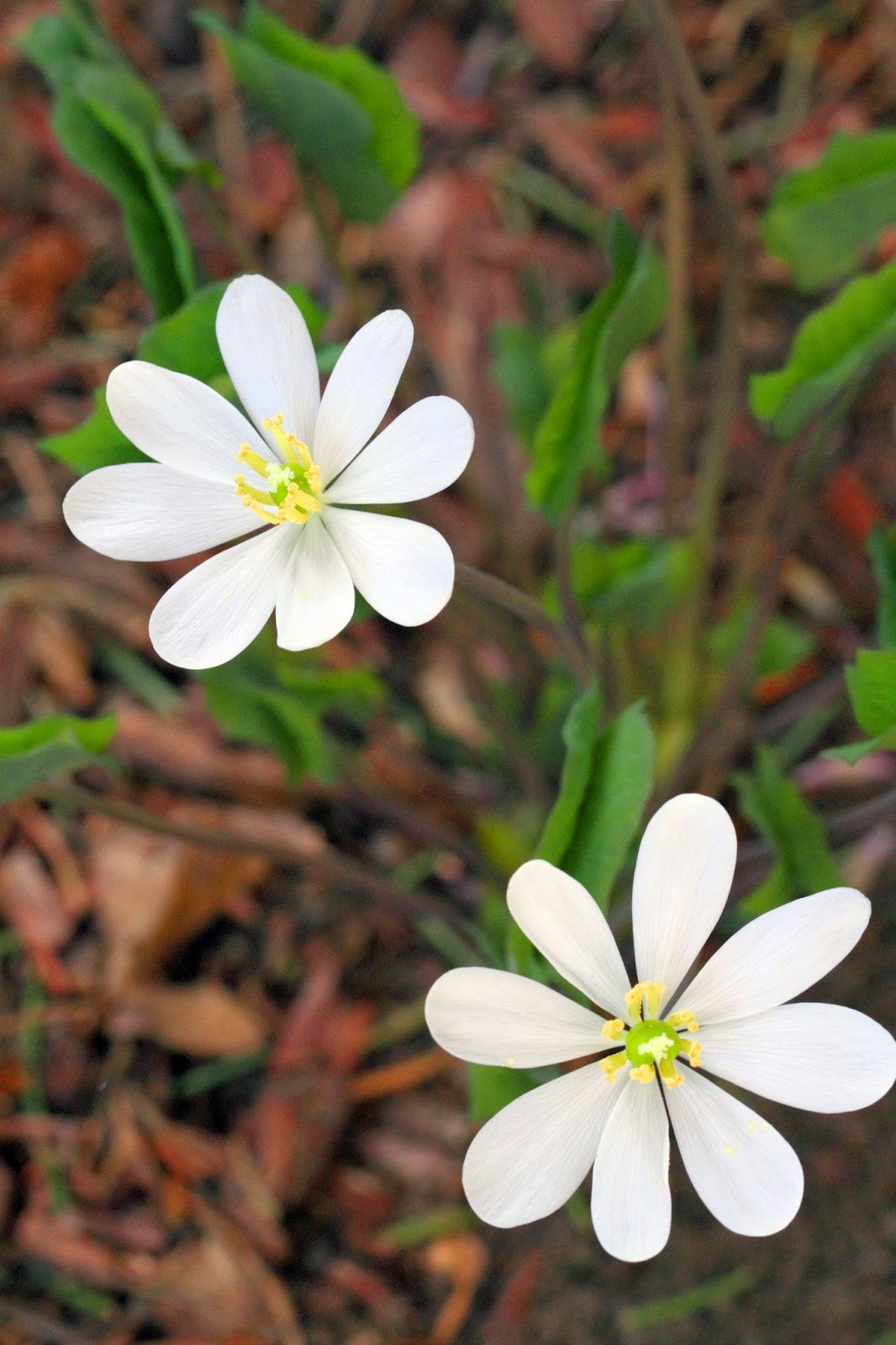 |
| Jeffersonia diphylla (Twinleaf) flowers, April 15, 2015. |
The genus Jeffersonia
was named by Benjamin Barton in honor of Thomas Jefferson, third president of
the United States. There are only two
species in the genus, including Jeffersonia
diphylla (Twinleaf), native to northeastern United States. The other
representative, J. dubia, is from
eastern Asia. Twinleaf is found in rich mesic forests in many eastern states, often
on slopes and usually over limestone or other calcareous rock. It is uncommon to occasionally encountered in
most states, considered rare in nine (Minnesota, Iowa, Wisconsin, Michigan, New
York, New Jersey, North Carolina, Georgia, and Alabama) of the seventeen states
it is found, and is protected as a state-listed species in four states
(Georgia, Iowa, New York, and New Jersey).
In Illinois, twinleaf is uncommon, but not currently considered rare or
protected.
 |
| Close up of Jeffersonia diphylla (Twinleaf) flower with eight white petals and eight stamens. |
 |
| Jeffersonia diphylla (Twinleaf) fruit capsule showing the incomplete dehiscence, resulting in a frog-mouth appearrance. |
 |
| Jeffersonia diphylla (Twinleaf), April 15, 2015. |
The showy white flowers appear in early spring (early to
mid-April) and are present for a very short time, being blown off by the
slightest breeze. They rarely last more
than a single day. The flowers appear to
be pollinated by small halictid bees; however, they exhibit an apparent
self-pollinating mechanism that ensures seed production without insect
visitation. Two to three days after
flower initiation, often with the showy petals already lost, the eight stamens
all bend inward to contact the stigma. The
resulting fruit matures in early to mid-June.
The fruit is an interesting pear-shaped capsule that when fully open has
the appearance of a frog with a gaping mouth.
After flowering the namesake leaves continue to grow until they somewhat
resemble a pair of small elephant ears.
 |
| Jeffersonia diphylla (Twinleaf) showing enlarged elephant ear like leaves. |
|
References:
Kartesz, J.T., The Biota of North America Program (BONAP).
2015. North American Plant Atlas. (http://bonap.net/napa).
Chapel Hill, N.C. [maps generated from Kartesz, J.T. 2015. Floristic Synthesis
of North America, Version 1.0. Biota of North America Program (BONAP). (in
press)].
O’Rourke George, L. 1997. Jeffersonia. In: Flora of North America north of Mexico, Volume 3.
Oxford University Press, New York, NY
Smith, B.H., M.L. Ronsheim, and K.R. Swartz.
1986. Reproductive ecology of Jeffersonia
diphylla (Berberidaceae). American Journal of Botany 73(10):1416-1426.



